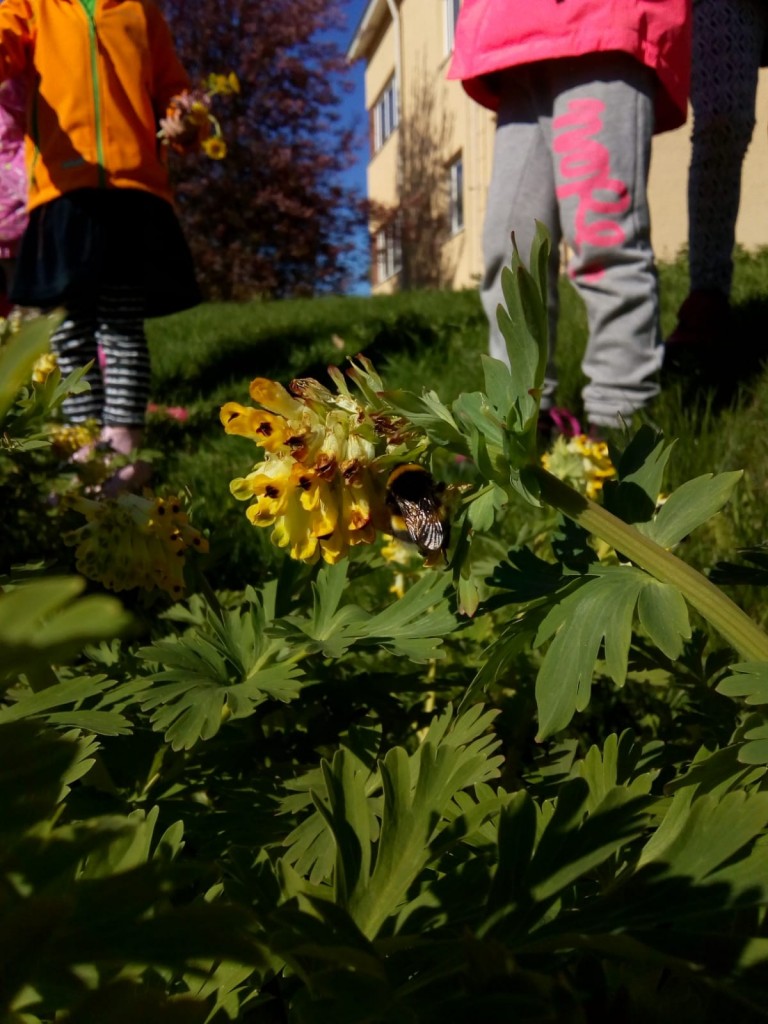Plant-pollinator
Interaction
|
1. Interactive introduction Interactive introduction part (20-25 min) and slide show. Why we have such a diverse array of different coloured and shaped flowers? We discuss the interactions between flowers and pollinators, what colours many important pollinators see (e.g. many insects and birds see ultraviolet reflective light that humans cannot) and how different pollinator species vary in their sensitivity to different colours. Material also discusses how humans depend on the ecosystem services provided by pollinators. 2. Pollination game Pollination game demonstrates how depending on the visual background and visual system of pollinators, selection favours differently coloured flowers across generations (20 min). 3. Observations Participants own observations with UV flashlights. Students can collect different kind of flowers from the wild and observe them with UV flashlights in darkened room. With UV flashlights students can see and observe patterns that are normally invisible for humans but visible for many pollinators that can see ultraviolet colours. 4. Pollinator’s daydream In this exercise you make a collective flower with group, imagined through pollinators eyes. Each participant will get a big piece of paper or cardboard and liquid paints, basic or UV-reflective. Click here for instructions. 5. Remote teaching materials: Observing nature - pollinators and flowers |
|
– – – – – – – – – More resources and inspiration: Books: Martin Stevens: Sensory Ecology, Behaviour, and Evolution. Oxford University Press. 2013 Martin Stevens: Cheats and Deceits: How Animals and Plants Exploit and Mislead. Oxford University Press. 2016 Videos: How bees see the invisible The coloured wings of wood tiger moths, seen with moth and bird eyes Tietää & Rakastaa: Colours as seen by animals (English subtitles) Other: Sensory Ecology Group Goulson Lab: Best garden flowers for bees |
|
|
|
– – – – – – – – – –
Our materials are licensed under the Creative Commons Attribution-ShareAlike 4.0 International License: http://creativecommons.org/licenses/by-sa/4.0/. It means you can use our materials freely, but please remember to always credit our work and mention us whenever you are sharing contents of our project online: Instagram: @evolution_in_action, Facebook: @evoluutiopajat, Twitter: @EvoWorkshops. If you use our materials in teaching, we are happy to hear greetings and feedback. You can tag us on social media or send us an email: [email protected] Evolution in Action logo: jpeg, eps |







